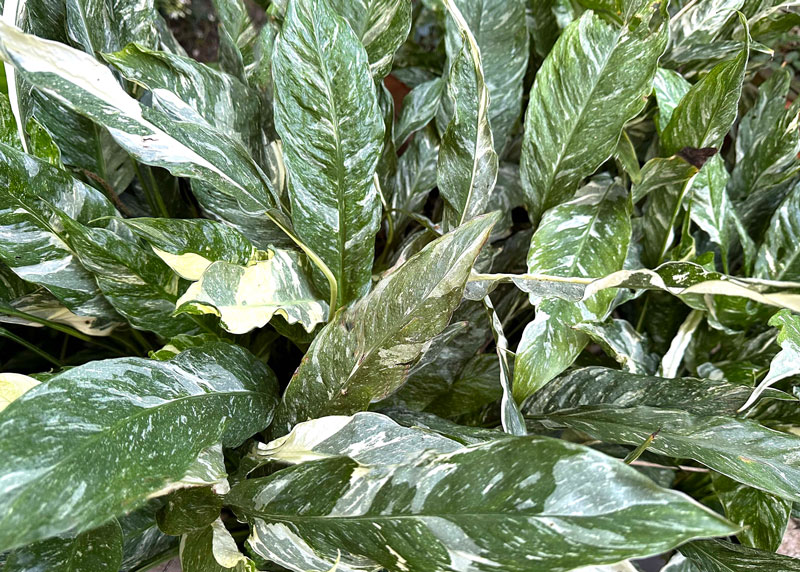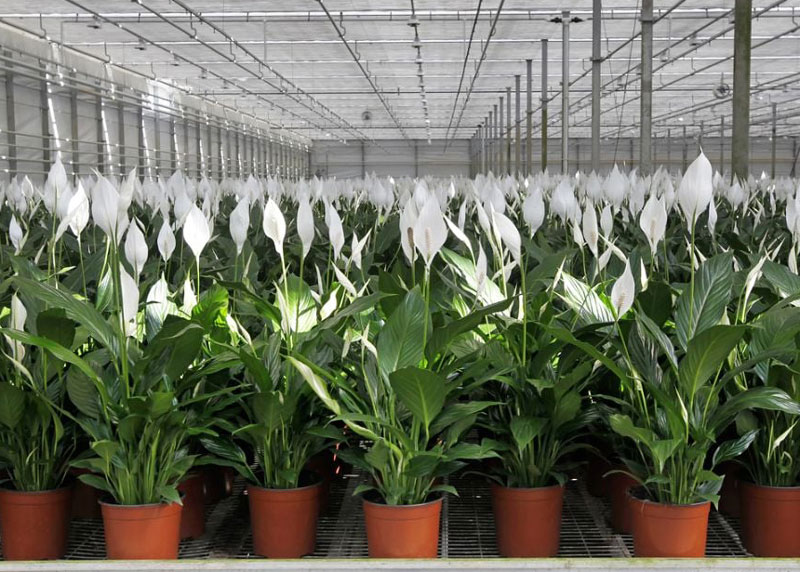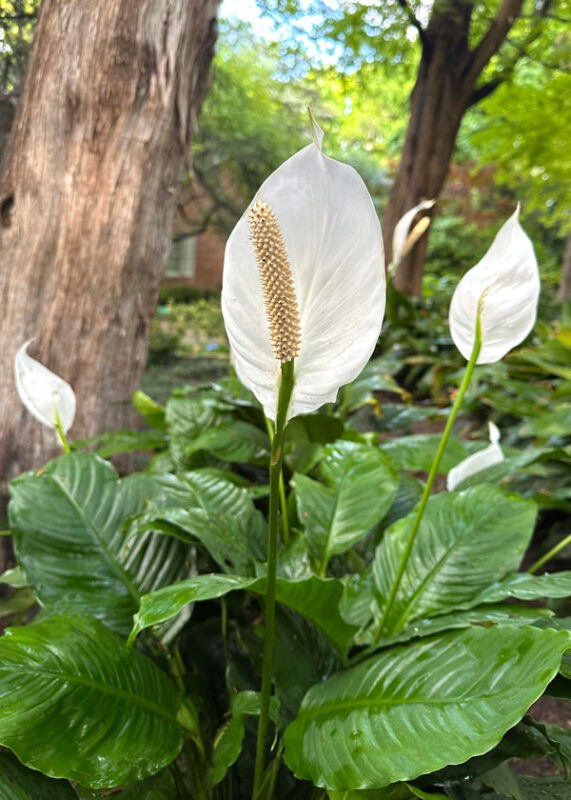Peace lilies out for the summer
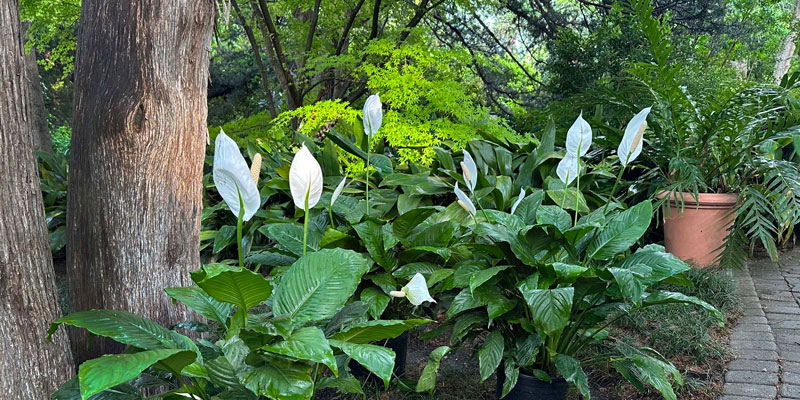
I started out with three Mauna Loa Spathiphyllums in 2-gallon pots. I bought them for the hearth in our living room 25 years ago. I knew they could handle the low light conditions and that they’d give us those lovely white blooms coming out of each winter.
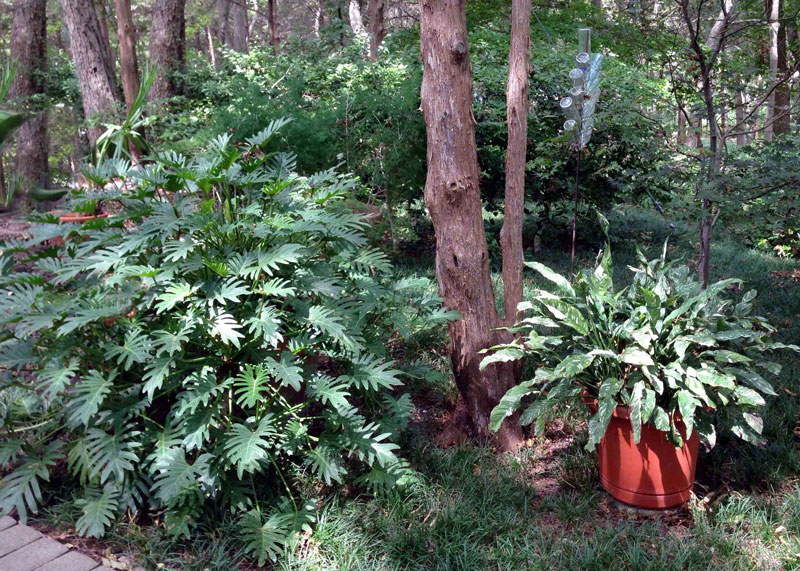
But my plants kept moving. They ended up in my greenhouse, and then I decided to give them a try out in the landscape. After all, we had nothing but shade, and plants that offered flowers and interesting leaves were a nice substitute for big beds of green groundcovers. Most flowering annuals certainly weren’t going to do very well under those circumstances.
My plants have grown and filled up their pots time after time. I’ve kept dividing and repotting them into more pots until now I have probably 35 two-gallon pots of peace lilies. All of them are currently blooming. It makes for a handsome display.
Come fall I’ll take them back into my greenhouse, but if you had only one or a few, they could just as easily come back into your house. They’re really agreeable houseplants. If all tropical plants could be so willing to please us.
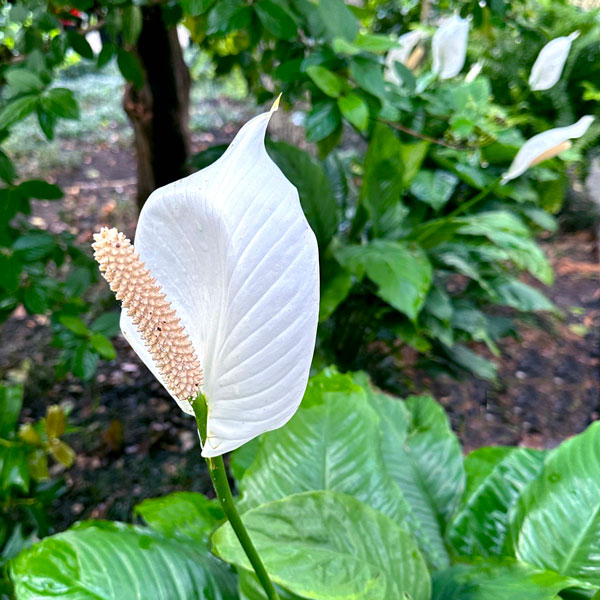
Important timelines…
• Spathiphyllums were introduced into the greenhouse marketplace in the 1950s. Early selections were made for glossy leaves and compact growth more than for flowering.
• 1960s and 70s: Breeding work began to develop more compact plants with more and larger flowers. Main areas of that work were Florida, the Netherlands and Southeast Asia.
• 1980s and 90s: Tissue culture allowed massive numbers of plants to be produced clonally, eliminating the slow process of growing from division and the unpredictability of seeds.
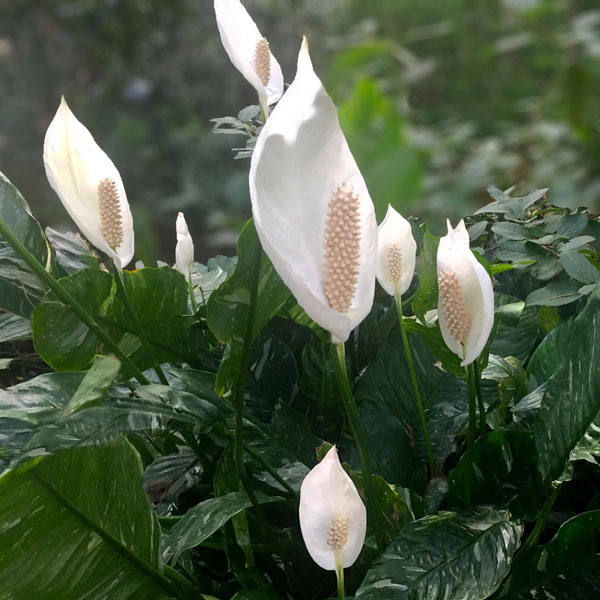
• 1990s – current: Expansion of the numbers of cultivars in all sizes, also including variegated types like Domino.
Some facts to know…
Scientific name: Spathiphyllum sp. (Missouri Botanical Garden tells us there are some 50 species in this genus.)
Common name: Peace lily
Plant family: Araceae
Native homes: Tropical forest floors of Central America and Southeast Asia
Mature height (in bloom): Depends on variety, but 1 to 5 ft.
Potting soil: Highly organic, in fact, probably lacking any native Texas topsoil. I grow mine in a mix made up of 60 percent sphagnum peat moss, 20 percent finely ground pine bark mulch or well-rotted compost, 10 percent horticultural perlite, and 10 percent expanded shale.
Lighting requirements: Indoors bright indirect light, but tolerates lower light. Outdoors requires shade. No direct sunlight.
Water requirements: Keep moist but not wet. It’s best not to let plants wilt badly or you will have leaf scorch around edges and at tips of leaves.
Fertilizer requirements: Complete-and-balanced, water-soluble. Dilute according to label directions and feed monthly. Do not over-feed or you will cause leaf scorch. Nutrients will be most needed spring through early fall. Cut back during winter while plants are less active, and when you have plants indoors in low-light conditions.

